Each day a single freight train does the rounds of suburban Melbourne, doing the work of 50 trucks. So how does 1000 tonnes of gravel slip under the radar?
Toot toot
In the middle of the night a train departs the Hanson gravel quarry at Kilmore East, 70 kilometres north of Melbourne.
It slips through Flinders Street Station just after midnight, and heads for the Hanson concrete plant at Westall, 25 kilometres south-east of the CBD.
As the sun rises 1000 tonnes of gravel is unloaded, then the empty train heads back for the city.
Through Flinders Street Station.
Then onto the Craigieburn line, for the trip back to the Kilmore East quarry.
Another 1000 tonnes of gravel is then loaded onto the train.
Then back to Melbourne again – but this time bound for Brooklyn, 10 kilometres to the west of the CBD.
The train first heads to Craigieburn, following suburban trains as far as Broadmeadows.
Then takes the goods lines south to Sunshine.
Where it has to slip between the frequent V/Line and suburban services.
Once clear of Sunshine, it heads through the dusty backblocks of Brooklyn.
Before arriving at the Hanson concrete plant.
Where the gravel is unloaded at the Hanson concrete plant.
With the train ending the day empty, ready to start all over again at Kilmore East.
A history of the train
The Kilmore East quarry train commenced operations in 1976.
It soon became known as the ‘Apex train’ after the quarry operator, and the service was a source of pride for the Victorian Railways, as they fought back against road transport.
In the field of bulk freight, the most significant development during the year was the inauguration of trainload movements of crushed rock from Apex Quarry’s crushing plant at Kilmore East to that Company’s private siding at Westall.
Commencing in September 1976, with five trains weekly conveying 2,800 tonnes of product, by the end of the year the movement had built up to eight trains weekly conveying over 8,000 tonnes.
The successful negotiation of this contract, in competition with road operators, once again proved the Railways’ economic superiority for bulk movements, even over relatively short distances,particularly where the alternative would be transit over heavily congested metropolitan roads of between 60 and 70 heavy trucks daily.
Following the transition to V/Line, the service went from strength to strength.
With the quantity of freight carried increasing year on year.
There was a substantial increase in Apex quarry traffic since the introduction of an additional twice-daily service from Kilmore East to Brooklyn. The original block train consisting of 21 VHQY wagons is now operating twice-daily between Kilmore East and Westall as a result of improved scheduling.
Minerals and quarry revenue of $5.5million was up 21 per cent on last year, and the additional service of a 10-12 wagon block train was introduced for the Pioneer Quarry traffic from Kilmore to cope with the higher demand for quarry products.
Following privatisation of V/Line in 1999, the contract passed to Freight Victoria
And then to Pacific National in 2004, following their takeover of Victorian rail freight.
With Qube Logistics now operating the train, having won the contract in 2016.
Facts and figures
The train is 260 metres long, with a single 3,800 hp G class diesel locomotive hauling 24 ‘PHAY’ hopper wagons.
Each wagon is 10 metres long and a tare mass of 20 tonnes, for a total weight of 460 tonnes empty and around 1498 tonnes loaded – which gives 1038 tonnes of gravel moved per train, twice a day.
Meanwhile on the road ‘truck and dog trailer’ combinations deliver payloads of up to 40 tonnes.
So 26 trucks are needed to move the same amount of gravel as one train – which is 52 trucks per day, or 104 truck movements once the empty return trip is added.
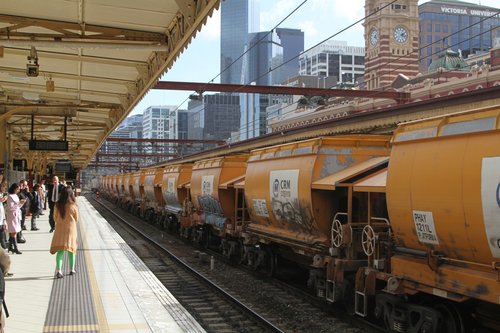
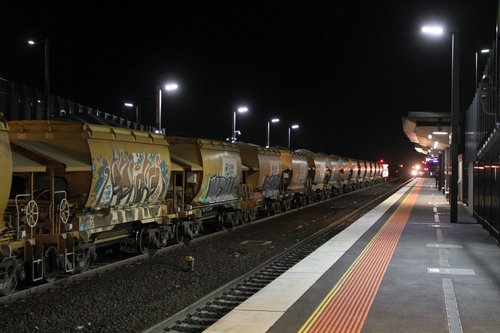
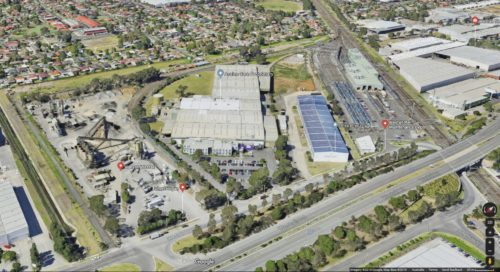
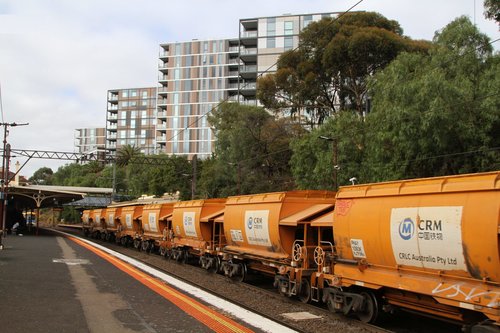
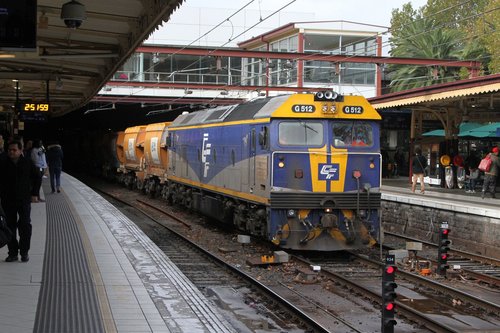
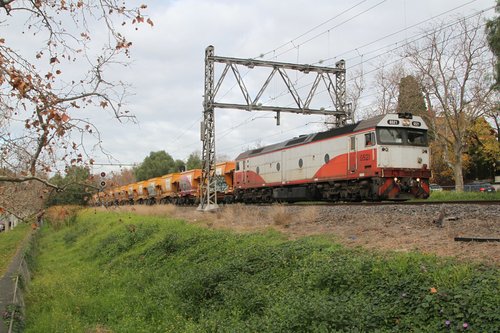
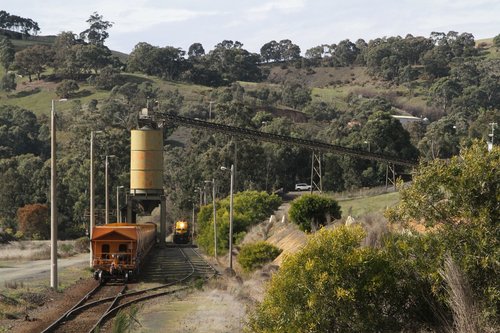
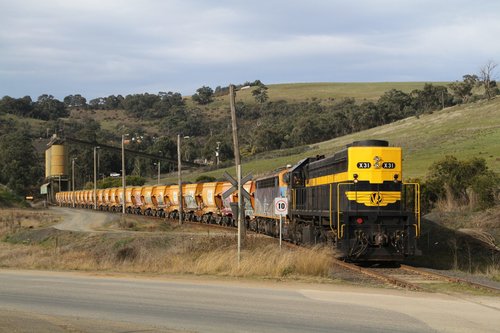
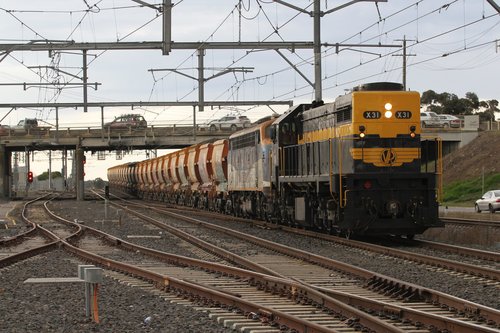
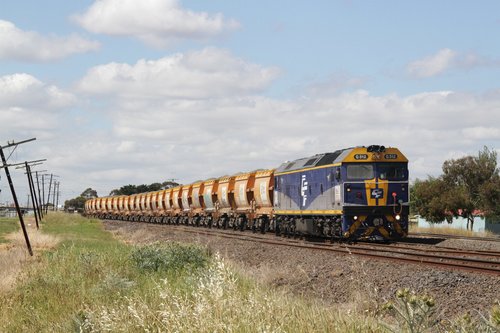
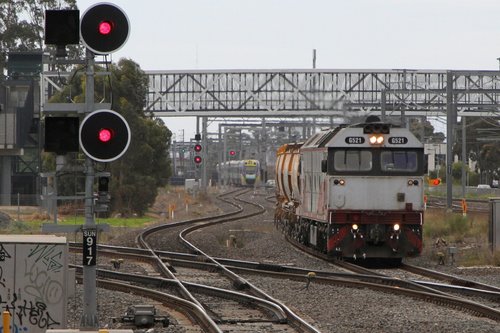
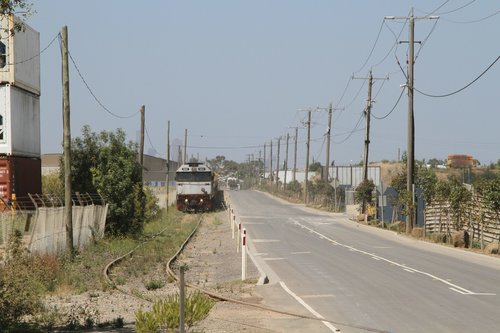
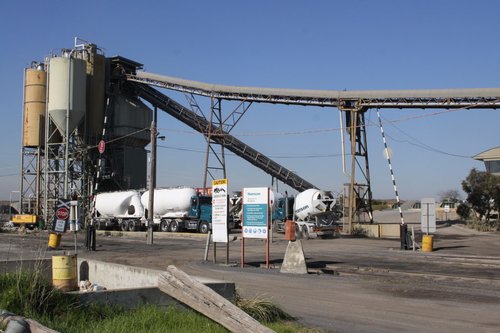
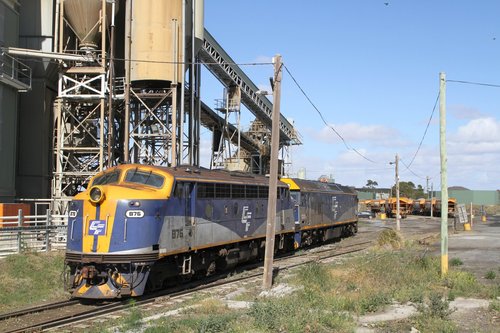
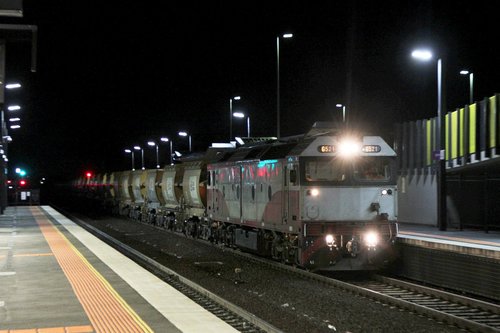

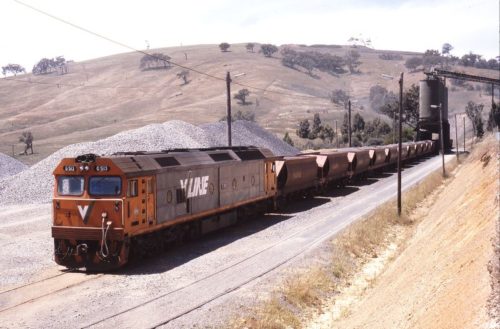
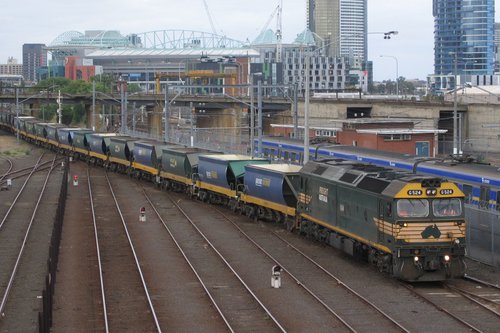
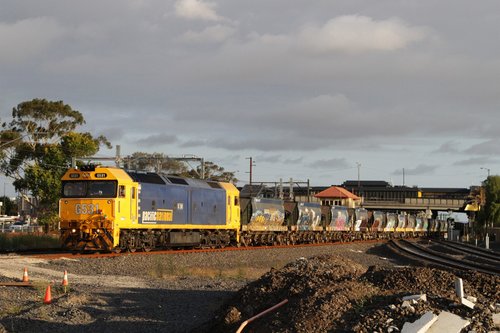
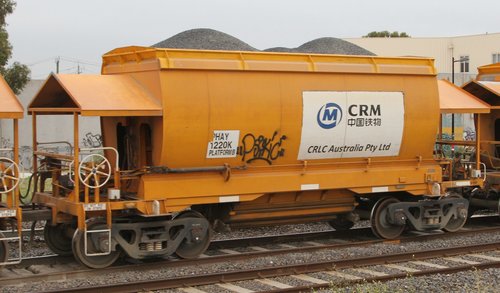
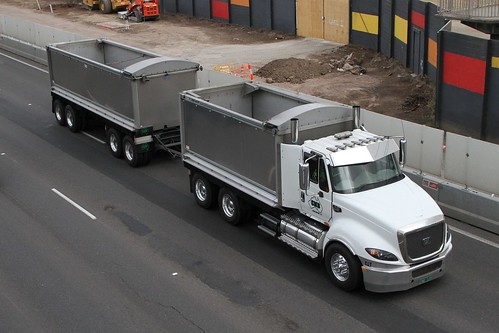

I had no idea about this train. Love you Marcus. Oh that freight between Melbourne and Sydney isn’t moved by train.
Glad you liked the post.
FYI rail market share for Melbourne <> Sydney freight is down to less than 10%:
https://www.bitre.gov.au/publications/2009/files/is_034.pdf
That report is interesting but seems to be about 12 years old.
The Bureau of Infrastructure, Transport and Regional Economics has a lot more data if you’re willing to dig through it:
https://www.bitre.gov.au/statistics/rail/index.aspx
[…] There is a level crossing at the corner of Somerville Road and McDonald Road in the Melbourne industrial suburb of Brooklyn, used twice daily by the Apex quarry train. […]
[…] railway yards beside North Melbourne station have also changed, when I photographed the ‘Apex’ quarry train parked for the […]